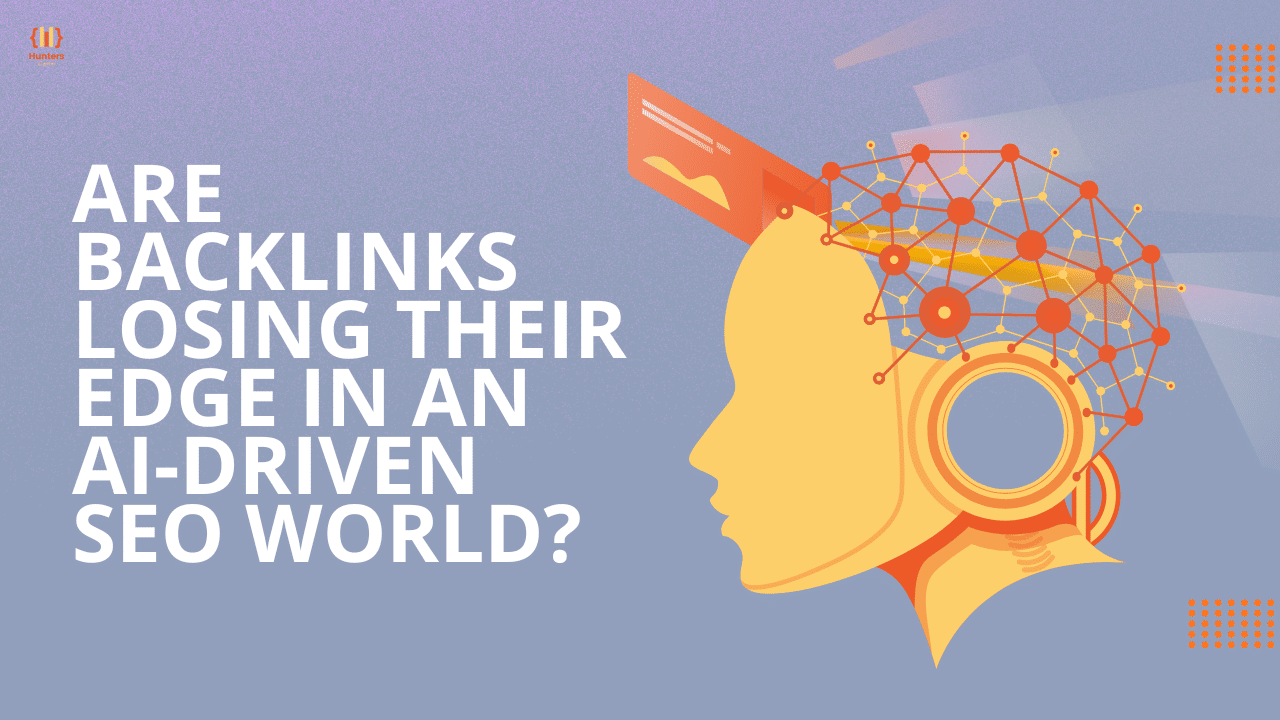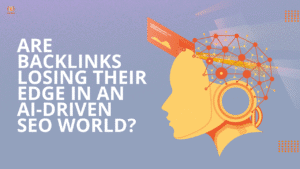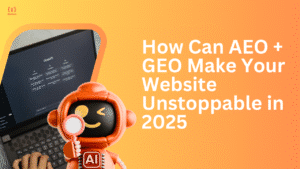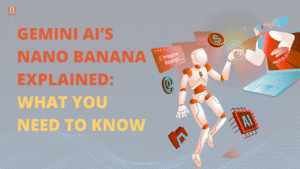Search engine optimization (SEO) has historically been a battle of adapting to changing algorithms and employing various tactics. For years, backlinks were considered the most important signal of authority, and links were the web’s “votes of confidence.” But in 2025, artificial intelligence (AI) is altering the game. With systems like RankBrain, BERT, and Gemini, Google is better at determining signals of intent, context, and content quality than just counting links.
Are backlinks dead in this new AI-based world of SEO?
This article will share data, expert opinions, and actionable tactics to show that backlinks still matter – just in a smarter, more contextual world – to help you future-proof your SEO in the AI age.
What Are Backlinks and Why Were They So Important?
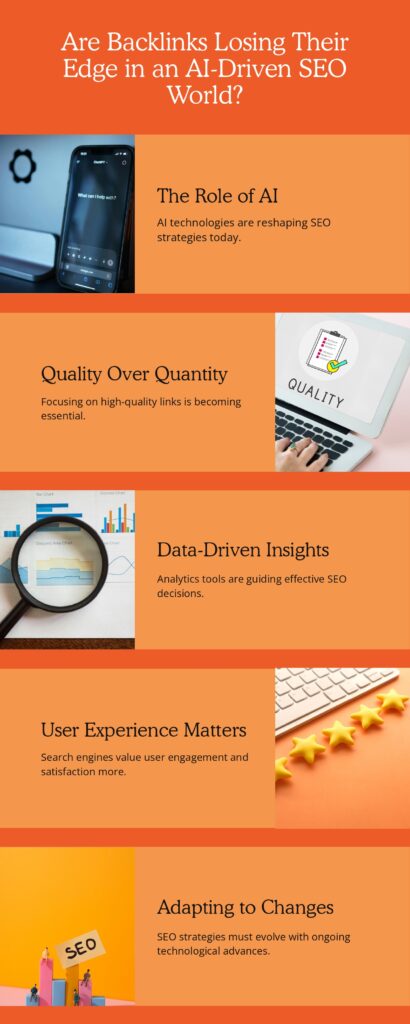
Backlinks are hyperlinks from one website to another. Think of them as digital referrals—if an authoritative site links to your page, search engines assume your content is credible and relevant.
In the early 2000s, Google’s PageRank algorithm revolutionized SEO by ranking sites based on their link profile. The more quality backlinks you have, the higher your site ranks.
- Example: A tech blog linked by Forbes, TechCrunch, or Wired would instantly gain domain authority.
- SEO agencies built strategies entirely around link exchange, guest posting, and outreach campaigns.
Backlinks acted as the “currency of trust” in search rankings. However, this model had flaws. Black-hat SEO practitioners started buying links, creating link farms, and manipulating anchor texts.
When Google began deploying Penguin and Hummingbird updates, it cracked down on low-quality and spammy links. That’s when content relevancy began to challenge the quantity of links.
How Google’s PageRank Algorithm Made Backlinks the King
Google’s PageRank worked like an academic citation model. Each backlink passed a portion of “link juice,” signaling that the content was valuable.
Here’s how it worked conceptually:
| Ranking Factor | Pre-AI Era | AI-Driven Era |
| Backlink Quantity | Primary Ranking Factor | Still Important, But Contextual |
| Anchor Text Optimization | Heavily Weighted | Now Less Critical |
| Content Quality | Secondary | Dominant Factor |
| User Intent/Experience | Minimal Impact | Core Metric |
By 2015, Google began integrating machine learning into its ranking models, meaning that backlinks alone could no longer guarantee top positions.
AI started analyzing signals like:
- Dwell time
- User satisfaction metrics
- Entity-based relationships
- Content comprehensiveness
This marked the beginning of a massive paradigm shift.
The Shift: AI’s Entry into SEO
AI is reshaping SEO by focusing on content relevance, user intent, and brand authority rather than just backlinks. Search engines now use AI to understand meaning and context, rewarding clear, trustworthy, and well-structured content.
1. The Role of AI in Search Engine Algorithms
AI’s introduction reshaped how search engines interpret and rank content. Algorithms no longer rely solely on static metrics (like backlinks). Instead, they learn and adapt based on user interactions and semantic meaning.
AI systems evaluate:
- User intent: What the searcher truly wants, not just the keyword used.
- Content relevance: Whether the page fully satisfies that intent.
- Authority and trust signals: Beyond backlinks, this includes expertise, transparency, and author bios.
In other words, AI doesn’t just count links—it understands relationships between ideas, topics, and sources.
Example:
If a user searches for “best running shoes,” AI won’t just show pages with lots of backlinks. It prioritizes pages with real user reviews, multimedia, and structured data that match user intent.
2. Google’s AI Tools: RankBrain, BERT, and Gemini
Google has introduced several key AI systems that directly influence ranking signals.
| AI System | Launched | Purpose | Impact on Backlinks |
| RankBrain | 2015 | Understands user intent and query meaning. | Reduces backlink dominance. |
| BERT | 2019 | Processes natural language for contextual understanding. | Makes link context more important than quantity. |
| Gemini | 2023 | Deep AI model integrating multimodal content understanding. | Focuses on authority through topic clusters, not link counts. |
These AI systems mean Google can now assess semantic relevance and user satisfaction directly—making the backlink count less critical than ever before.
Are Backlinks Still Relevant in 2025?
Yes, but it’s all about quality over quantity. AI-driven SEO values relevant, trustworthy links that reinforce expertise, not just large link numbers.
Data-Driven Insights on Backlink Value
Let’s be clear: backlinks aren’t dead. They’re evolving.
According to a 2025 Ahrefs study, backlinks still influence about 30% of ranking signals, down from 60% a decade ago. However, link quality and contextual placement now matter more than raw volume.
Key findings:
- 67% of high-ranking pages still have at least one authoritative backlink.
- Anchor text diversity now plays a minor role (5–10% impact).
- Topical relevance between linked pages drives the most ranking weight.
This means a single, well-placed backlink from a trusted niche site can outperform 50 generic ones.
Content Quality vs. Link Quantity: The New SEO Equation

The SEO landscape has evolved — quality now outweighs quantity. Search engines focus less on how many links point to your page and more on how well your content informs, engages, and satisfies user intent. Meaningful, in-depth content now drives stronger rankings than a long list of backlinks ever could.
1. Why Content Relevance Now Beats Link Volume
AI no longer rewards quantity—it rewards quality, clarity, and intent fulfillment.
Imagine this scenario:
Two sites target the keyword “best vegan protein sources.”
- Site A has 100 backlinks but surface-level content.
- Site B has 10 backlinks but offers scientific data, recipes, and nutrition charts.
In 2025, Site B will win because AI can assess semantic depth, E-E-A-T signals, and user engagement metrics.
Quick Tip:
Focus on creating “link magnets”—data reports, infographics, and research-based blogs that earn links naturally.
2. How AI Understands Context and Authority
AI algorithms now use entity recognition to determine how topics, people, and organizations connect online.
How to Build AI-Recognized Authority:
- Use structured data and schema markup.
- Write long-form topical clusters.
- Earn mentions and citations from credible sources.
This is authority through association, a concept redefining SEO in the AI era.
Semantic Search and Natural Language Processing (NLP)
In the pre-AI era, SEO revolved around keywords. You’d stuff your page with exact-match phrases like “best SEO agency Singapore” and expect results. But now, with semantic search and Natural Language Processing (NLP), search engines understand meaning—not just words.
Semantic search allows Google to interpret context, relationships, and intent behind queries. This means the engine can match user needs even if the keywords don’t appear verbatim on a page.
For example, when someone searches “how to grow website traffic fast,” Google might show results optimized for “boosting organic traffic” or “increasing visitors quickly.” Why? Because NLP understands these are semantically related concepts.
How NLP Impacts Backlinks:
- Contextual relevance matters more: A backlink within a related topic carries more weight than one from an unrelated source.
- Anchor text diversity is rewarded: AI identifies unnatural link patterns.
- Co-citation and co-occurrence matter: Even unlinked brand mentions can signal authority.
In short, semantic relevance > keyword repetition. AI measures whether a backlink contextually strengthens the topic—not just whether it exists.
Pro Tip:
Create content clusters using related terms and entities. Instead of chasing backlinks, focus on being the most comprehensive source on your topic. AI will naturally reward you.
E-E-A-T: Experience, Expertise, Authoritativeness, and Trustworthiness
E-E-A-T (Experience, Expertise, Authoritativeness, Trustworthiness) has become the backbone of Google’s ranking philosophy—especially since AI-driven algorithms now evaluate credibility signals automatically.
What E-E-A-T Means for SEO in 2025
| Element | Description | AI Evaluation Signal |
| Experience | Firsthand knowledge or user-generated insight. | User reviews, testimonials, author bios. |
| Expertise | Depth of knowledge in your niche. | Citations, published works, credentials. |
| Authoritativeness | Recognition by others in your field. | Mentions, backlinks from experts, PR coverage. |
| Trustworthiness | Transparency, accuracy, and ethical content. | HTTPS, privacy policy, accurate data, no clickbait. |
Backlinks still play a role in Authoritativeness, but now, AI cross-verifies these signals with user engagement, factual accuracy, and brand reputation.
Actionable Tips:
- Add author bios with real credentials.
- Link to credible studies and authoritative resources.
- Display user reviews and case studies to demonstrate experience.
- Use fact-checking and updated sources regularly.
The takeaway: In 2025, backlinks only matter if they align with E-E-A-T principles.
The Rise of Topical Authority Over Backlink Authority
Google’s AI systems no longer view websites as just collections of pages—they see them as topic entities. That’s where Topical Authority comes in.
Topical Authority means being recognized as a go-to source for a specific subject area. Instead of measuring how many links point to your site, AI now measures how comprehensively and consistently you cover a topic.
Example:
Let’s say you run a blog about sustainable living.
If you consistently publish in-depth guides on eco-friendly homes, recycling, renewable energy, and green technology, Google recognizes you as a topical authority, even if your backlinks are limited.
Topical Authority vs. Backlink Authority
| Factor | Backlink Authority (Old) | Topical Authority (AI Era) |
| Focus | Quantity of inbound links | Depth and breadth of topic coverage |
| Ranking Signal | External votes | Content structure and internal linking |
| Sustainability | Vulnerable to link updates | Long-term brand strength |
| Example | Link exchanges, guest posts | Topic clusters, pillar content |
To build topical authority:
- Create pillar pages with interlinked cluster articles.
- Maintain consistent semantic relevance across content.
- Use AI tools like MarketMuse or Clearscope to find topic gaps.
AI understands who owns a topic—not who bought the most links.
The Role of Backlinks in an AI-Driven Ranking System
Backlinks remain a key signal of trust and authority, even in AI-driven SEO. However, AI now weighs context, relevance, and brand credibility alongside links, meaning backlinks must be high-quality and topically aligned to impact rankings effectively.
1. Google’s Statements on Link Relevance
In a 2024 Q&A, Google’s Search Liaison confirmed:
“Links remain one of many ranking signals, but their impact has decreased as we’ve improved content understanding and user satisfaction models.”
This means backlinks are now contextual signals rather than primary ranking drivers.
Modern SEO success depends on how backlinks fit into a larger semantic and experiential framework.
2. Are “Quality Links” Still a Ranking Factor?
Absolutely—but quality now means something different.
Old definition: A dofollow link from a high Domain Authority (DA) site.
New definition: A relevant, contextually aligned, user-driven reference.
Example:
- A guest post on a high-DA blog = valuable (if relevant).
- A link from a viral Reddit discussion = valuable (if authentic).
- A paid backlink in a PBN = likely ignored by AI.
AI models like Gemini can now detect manipulative link-building patterns with astonishing accuracy. Link farms, excessive guest posts, and reciprocal linking are all becoming obsolete. To stay ahead, marketers must earn backlinks organically through value, authority, and originality.
Building Smarter Links in an AI World
1. Strategies for Natural Link Earning
In 2025, smart link building means earning links, not trading them.
Here’s how:
- Publish Original Data or Case Studies: Journalists and bloggers love citing new research.
- Create Visual Assets: Infographics, charts, and interactive diagrams naturally attract backlinks.
- Leverage Digital PR: Pitch newsworthy content to media outlets.
- Collaborate with Niche Experts: Co-author content that benefits both parties.
- Offer Free Tools or Templates: Utility-based content earns sustainable backlinks.
When combined with AI-driven content optimization, these strategies yield backlinks that reinforce authority naturally.
2. Leveraging Digital PR and Data Content
Digital PR is the modern answer to link building. Instead of begging for backlinks, you earn them through visibility.
Example: A cybersecurity company released a data report on global hacking trends. Within a week, over 120 news outlets linked to their study—zero outreach required.
Tips for Digital PR Success:
- Use AI tools like BuzzSumo to identify journalists and trending topics.
- Release industry insights backed by credible statistics.
- Craft press releases optimized for SERP snippets.
When AI sees your brand earning organic citations from trusted domains, it interprets your site as an authority hub—boosting rankings and credibility simultaneously.
How AI Is Changing Link Outreach and Prospecting
Traditional link outreach often involved endless cold emails, broken-link checks, and spreadsheet tracking. But in the AI-driven SEO landscape, outreach has evolved into something far more intelligent, data-backed, and personalized.
AI tools can now automate almost every part of the process—from identifying potential link partners to crafting tailored outreach messages based on content compatibility and engagement patterns.
How AI Transforms Link Outreach
| Traditional Outreach | AI-Driven Outreach |
| Manual prospecting | AI identifies relevant, high-authority sites automatically |
| Generic email templates | AI writes context-aware, personalized outreach messages |
| Time-consuming follow-ups | Smart automation sequences adapt based on recipient behavior |
| Low response rates | Predictive models target higher success probabilities |
Pro Tip:
Use AI to find “content gaps” in your outreach targets’ websites. Offer them something that fills that gap—such as a statistic, infographic, or exclusive quote—and you’ll build relationships that turn into authentic backlinks.
In short, AI transforms link building from cold transactions to strategic partnerships.
Conclusion
The way SEO works has changed dramatically. With AI now understanding meaning, intent, and user experience, backlinks alone aren’t enough to win.
They still matter — but only when they’re earned, relevant, and tied to real value.
Success today means finding balance: creating authentic content, showing expertise, and building trust through genuine connections — not shortcuts.
Keep focusing on E-E-A-T, use AI as your creative ally, and write for people first. That’s how you stay visible and valuable in an AI-driven search world.
Want to future-proof your SEO strategy? Contact us today and let’s build an AI-ready SEO strategy that drives real growth.
FAQs
Yes, they now serve as contextual signals rather than ranking shortcuts. Relevance, authenticity, and user engagement matter more.
AI now values topical authority, content quality, and user intent satisfaction more than sheer link volume. Strong internal linking and entity-based SEO are key.
Focus on original data, visual assets, and expert collaborations. Publish resources that others want to cite rather than request links manually.
Tools like Surfer SEO, Clearscope, MarketMuse, and ChatGPT optimize content semantically while analyzing ranking opportunities.
Absolutely. AI is shaping how search engines evaluate relevance, authority, and intent. However, human creativity and authenticity will always be the driving forces behind lasting success.
About the Author:

